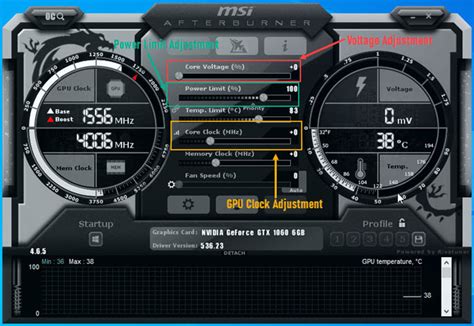Your cart is currently empty!
Ethereum: Underclock GPU Memory below “Recommended” Limits on Linux
To sleep with GPU memory: a guide to reduce heat without sacrificing hashrate
The high hashrate of Ethereum is not only necessary for the operation of the network, but also contributes significantly to energy consumption. However, excessive heat can be a problem for both hardware and users. In this article, we examine the lower -order GPU memory of Linux systems to reduce heat without sacrificing hashrate.
Why is GPU Memory Alulloking Work **
Ballowing GPU memory involves reducing the graphics card memory (VRAM) hour while keeping the entire clock speed (CPU and GPU combined) spare. This technique works using the CPU to handle most tasks, releasing the GPU to focus on calculations. This can reduce heat production due to increased heat distribution.
How to underline GPU memory
To undermine GPU memory at Linux:
- Check system settings : Before pushing, check that the graphics drivers are up-to-date and compatible with the new memory. You can check that there are updates in the system storage or manually install another driver.
- Use a device to monitor temperatures : Use devices such as “DMIDECODE” (to monitor the motherboard) and “HTOP” (for system-level process management). These help identify possible problems with heat production.
- Set memory settings in the grub configuration file : Open the Grub configuration file (
/etc/grub.cfg") To undermine GPU's memory, you need to add or change the lines.
Bash
GRUB Monuments = (Mem1+16) Mem2 = 128
Add these rows to set the lower memory to all graphics cards
`
Underclocking Guidelines
When pushing asleep, do not forget the following instructions:
* Keep the CPU clock speed constantly : Reducing the lower part of the GPU memory results in a reduction in system -level temperature. To avoid overheating, make sure the CPU remains in the recommended operating range.
* Avoid overloading of other components : Overbread can lead to reduced power and increased energy consumption. Avoid overloading other CPU or GPU seeds with high -frequency tasks.
* Be careful with overly recorded settings

: If you are underneath the GPU memory for too long, the system may eventually become unstable.
To boost the hashrate (optional)
If you have successfully underlined GPU memory, you may wonder if it will increase your hashrate. While sleeping reduces heat and energy consumption, its primary effect is on the capacity to manage CPU calculations. However, by reducing the number of graphics cards in parallel computing (such as Ethereum mining), the general hashrate increases slightly.
Conclusion
Ballowing GPU memory can be an effective method of reducing heat without sacrificing hashrate. By following these guidelines and monitoring the system temperature, you can successfully underline the graphics card memory while retaining the optimal performance of Ethereum mining aspirations. However, keep in mind that overly recorded settings should be used with caution and it is essential to closely monitor system behavior to avoid possible problems.
More sources
- [Grub documentation] ( For more information on grub configuration files and temperature monitoring.
- [Dmidecode documentation] ( More information about the temperature monitoring devices of the motherboard.
Keep up -to -date with Linux’s latest GPU memory settings by following online forums such as Reddit R/Linux and R/Ethereum. Happy mining!
Leave a Reply